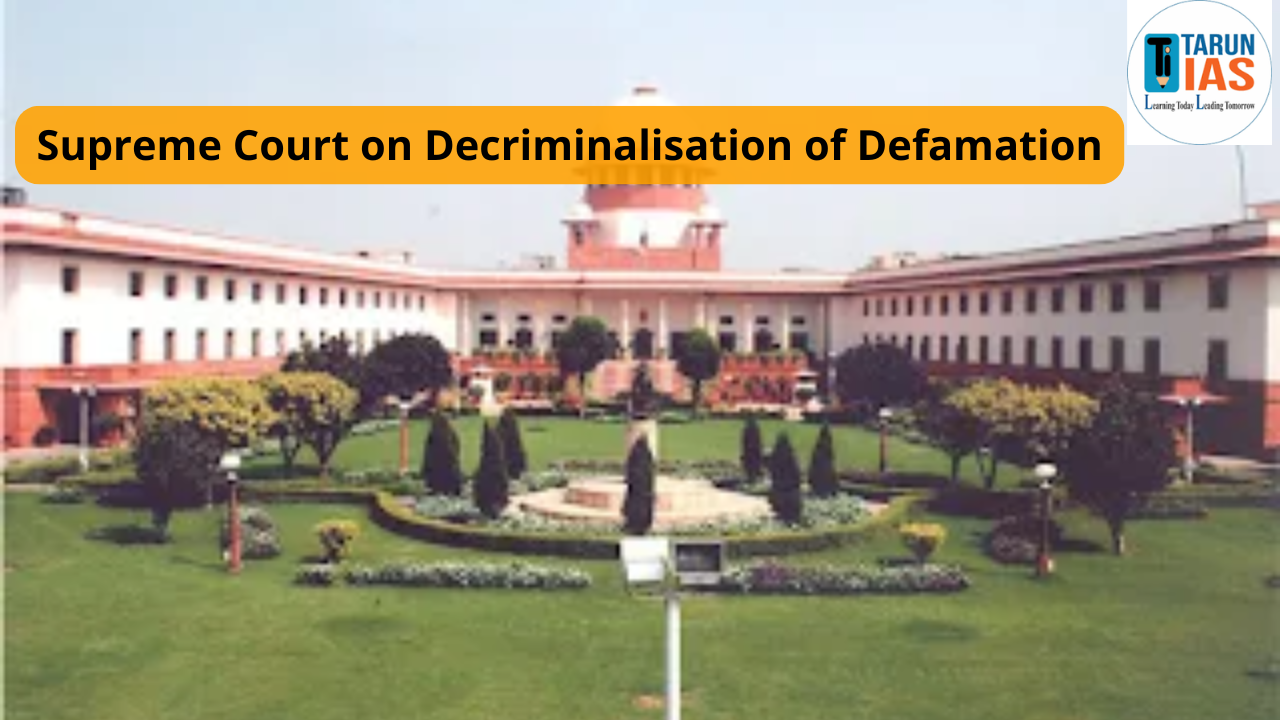The Berubari Case is one of the most important cases in the history of Indian constitutional law. This case is also known as In Re: The Berubari Union and Exchange of Enclaves Case (1960). The Berubari case has played an important role in translating the Preamble of India and clarified whether the Preamble is a part of the Constitution or not. The Supreme Court’s advisory opinion for this case shaped the future judgments and interpretations of the Constitution.
Berubari Union Case
The Berubari Union Case was referred to the Supreme Court of India under Article 143(1) of the Constitution by President Rajendra Prasad. This case mainly focuses on the constitutional procedure issue of transferring part of Indian territory, Berubari Union (in West Bengal), to East Pakistan (now Bangladesh) under the 1958 Nehru-Noon Agreement. This raised key constitutional questions, such as Whether Parliament could cede territory without amending the Constitution and Whether the Preamble of the Indian Constitution could be considered a source of legal power or constitutional interpretation. The Berubari Case became foundational in Indian constitutional law, especially in the context of territorial sovereignty, and also made the confusion clear about the status of the Preamble—whether it was part of the Constitution or just an introduction. The Supreme court’s announcement helped to solve this confusion for the case.
Also Read: Military Exercises of India
Berubari Case Background
The Berubari Union was a small territory located on the Indo-East Pakistan (now Bangladesh) border, in the Jalpaiguri district of West Bengal. After India’s Independence in 1947 this border was to be determined as the Radcliffe Line. However, due to variability in the line’s interpretation, a dispute arose between India and Pakistan related to Berubari Union’s ownership.
Later in 1958, Prime Minister Jawaharlal Nehru signed an agreement with Pakistan’s Prime Minister Feroz Khan Noon regarding the transfer of part of the Berubari Union to Pakistan; this agreement is known as the Nehru-Noon Agreement. This agreement led to legal and political controversy as it involved transferring Indian territory to another nation.
Also Read: Smallest State of India
Berubari Union Case Arguments
To resolve this case, the constitutional questions are raised, and the President of India referred the matter to the Supreme Court under Article 143 of the Constitution, seeking their advisory opinion on two main questions: Is legislative action necessary for the implementation of the Nehru-Noon Agreement? And Is the Preamble a part of the Constitution, and can it be used to interpret the Constitution?
The Key argument of the Berubari Case also includes that such an agreement could be executed through executive action under Article 1 and Article 3. Opponents argued that Parliamentary approval and possibly a Constitutional Amendment under Article 368 were necessary, as it involved ceding territory.
Also Read: How To Become An IAS Officer After 12th
Berubari Case Judgement
The Supreme Court of India, led by Chief Justice B.P. Sinha in his advisory opinion delivered in 1960 made the following key observations:
- Territorial Cession Requires Constitutional Amendment: The Court held that Parliament cannot cede Indian territory to another country merely by legislation under Article 3. Such a cession affects the territorial integrity of India and thus requires a Constitutional Amendment under Article 368.
- Preamble Not a Part of the Constitution (at that time): The Court opined that the Preamble is not a part of the Constitution and cannot be used as a source of substantive power or to limit or expand constitutional provisions.
Also Read: National Parks In India
Berubari Case Relevance to Preamble
The Berubari Case was the first major judicial interpretation of the Preamble. Though the Supreme Court held that the Preamble was not enforceable and not an integral part of the Constitution, this view was later overruled in the Kesavananda Bharati Case (1973).
In the Kesavananda Bharati case, the Supreme Court announced that the Preamble is part of the Constitution and an important tool to understand the basic structure doctrine. This evolution highlights the long-term importance of the Berubari Case in the constitutional development of India.
Berubari Case Impact
The Berubari Case had a major effect on Indian law and politics. This case has changed the way India handled territorial issues and constitutional analysis. Here are some of the main impacts of the Berubari Case:
- Constitutional Amendment Needed: The Berubari case made it clear that giving land to any other country needs a constitutional alteration. This added a layer of parliamentary control over such decisions.
- Parliament’s Role Strengthened: The Supreme Court view ensured that such major decisions could not be taken by the executive. Parliament should also be involved in such important decisions.
- Preamble’s Status Examined: The Supreme court has declared that the Preamble of India was not part of the Constitution in the Berubari Case. This was a serious discussion and started debates for years.
- Set a Legal Precedent: The Berubari Case judgement became one of the benchmarks for future cases that involve the Preamble and the land transfer.
- Future Amendments: The India-Bangladesh Land Boundary Agreement (2015) used this precedent of the Berubari Union case judgment. The 100th Constitutional Amendment Act enabled the transfer of 111 enclaves to Bangladesh and 51 enclaves to India.
Also Read: Ramsar sites in India
Other Cases Related to Preamble of India
The Berubari Union Case has initiated the judicial discussion on the constitutional status of the Preamble; subsequent landmark judgments further clarified its role in interpreting and safeguarding the Constitution. These cases played an important part in recognizing the Preamble as a guiding light for understanding the intent and spirit of the Constitution.
- Union of India v. Madangopal (1954): Though predating Kesavananda, this case acknowledged that the Preamble reflects the broad objectives of the Constitution, even if it does not confer enforceable rights.
- Kesavananda Bharati v. State of Kerala (1973): In this case of Kesavananda Bharati, the Supreme Court stated that the Preamble is an integral part of the Constitution. This introduces the Basic Structure Doctrine, declaring that features such as justice, liberty, equality, and fraternity (as stated in the Preamble) are unalterable.
- Indira Nehru Gandhi v. Raj Narain (1975): In this case, reinforcement of features such as democracy and rule of law as stated in the Preamble become part of the basic structure and cannot be destroyed by constitutional amendments.
- S.R. Bommai v. Union of India (1994): In this case, the court emphasized that secularism that is mentioned in the Preamble is also a part of the basic structure of the Constitution. This strengthens the idea that the Preamble can be used to assess the constitutionality of laws and executive actions.
- LIC of India v. Consumer Education and Research Centre (1995): This case defended that the Preamble reflects the constitutional philosophy and can be used as a source of interpretation. The Court stated that socio-economic justice, which is mentioned in the Preamble, must guide policy and legislative action.
Also Read: Important Battles in Indian History
Conclusion
The Berubari Union Case in 1960 is a turning point in the history of India’s constitution. The Berubari Case clarified that any transfer of Indian territory to a foreign state requires a constitutional amendment, strengthening the sanctity of India’s sovereignty and federal structure. The Supreme Court initially declared that the Preamble is not part of the Constitution; this decision was later revoked in the Kesavananda Bharati case. In this case the Preamble was acknowledged as containing the core values and spirit of the Constitution.
The Berubari Case UPSC has played a basic role in shaping India’s territorial policy, foreign agreements, and constitutional jurisprudence.
Berubari Case FAQs
What is the Berubari Union Case?
The Berubari Case was a Presidential Reference under Article 143 of the Indian Constitution to address whether India could transfer a part of its territory (Berubari Union) to Pakistan without a constitutional amendment.
Why was the Berubari Case important?
The Berubari case clarified that territorial cession requires a constitutional amendment under Article 368. This case also initiated the judicial debate on whether the Preamble is part of the Constitution, though this view was later overruled.
What did the Supreme Court rule in the Berubari case?
The Supreme Court in the Berubari Case ruled that Parliament cannot cede territory through ordinary legislation. A constitutional amendment is necessary to transfer Indian territory to another country.
What was the Supreme Court's view on the Preamble in the Berubari Case?
The Supreme Court announced that the Preamble is not a part of the Constitution and does not confer any substantive power. This interpretation was later overturned in the Kesavananda Bharati case (1973).
How did the Berubari Case impact the India-Bangladesh Land Boundary Agreement?
The Berubari Case judgment set a precedent that led to the 100th Constitutional Amendment Act, which enabled the exchange of enclaves between India and Bangladesh in 2015.














